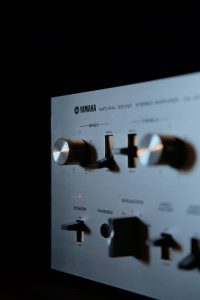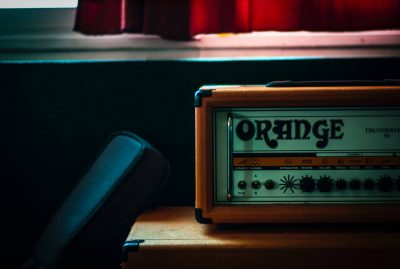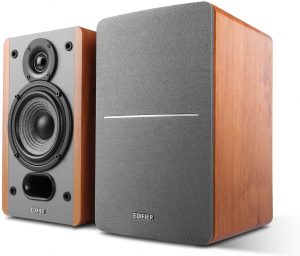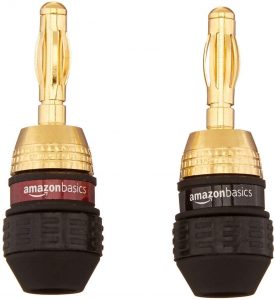
For most producers and mixers, a passive speaker is the way to go for crisp and sharp audio. However, they offer internal amplifications like powered speakers do. To make it work, you need to connect it to another component, usually an AV receiver or an amplifier, for more enhanced audio.
To help you out, here is our team’s quick guide on how to connect passive speakers to amp.
How to Connect Passive Speakers to Amp
Step 1: Measure Wire Length and Cut
The first step of connecting the speaker wire properly can make your sound system a whole lot better. This also prevents damage to your equipment.
First, measure the length needed to connect the passive speakers of the main power source. Place your speakers on your desired location and set one end of the speaker wire ring underneath them.
Unspool the wire and drag it to the power source or amp. It’s recommended you allot a few extra inches to accommodate for position changes.

Ideally, you should have equal lengths on both sides. Leaving a few extra inches will also allow you to tuck and hide wire when necessary.
Other Factors to Consider
Take these few things into consideration while laying out the speaker wires:
- Make sure not to leave wires lying across or disrupting walkways or doorways. Make sure they’re not placed anywhere where someone might trip on it.
- Make sure the speakers and power source are properly placed where it’s not possible for the wire to be pulled down. Applying tension or pressure on the wires will affect the sound quality.

- Speaker wires should be laid out in a straight and relaxed way. Do not coil, bundle, or wrap them.
- Avoid placing the speaker wires near any other wires. This includes stereo wires, AC power cords, or any other wires. Avoid other electrical appliances and devices as well. These may cause interference and mess up the audio frequencies through your speakers.
Step 2: Split Wire
Once you have your desired speaker wire lengths, you need to split them. Please note that you will need bare wires on each end to connect the speakers to your amplifier. You will also need a good quality wire-stripper to do this.
Make sure the wire-stripper is made for the gauge of the wire speaker. The gauge or width of the speaker is printed on the spool itself.

To use it, simply place the wire into the appropriate slots of the wire stripper. Do the following steps carefully to not cut through the wire itself.
- Carefully separate the two leads of the speaker wire with a wire-stripper.
- Cut the plastic insulation between them up to around 2 inches.
- Use the wire-strippers to remove the insulation and have at least an inch of wire exposed on each lead.
Step 3: Connect the Two Ends
Connect one end of the speaker wire to the intended terminal at the back of the speakers. The two common speaker wire terminals are tabs and circular connections.
Tabs and Connections
Tabs are for speaker wires with a small color piece of plastic underneath that’s either red or black. To open the terminal, just press on the piece of plastic and insert the wire. For circular connections, turn the colored connectors counterclockwise by hand to open the terminal connections underneath.

If you’re unsure how to open or find terminals of your speaker, check the manual or consult the manufacturers. Connect the other end of the speaker wire to the designated terminal of the amplifier.
The red terminal is positive, while the black terminal is negative. Match the same wires from each terminal from the speaker.
Positive should connect with positive, while negative should connect with negative. This will give you the best sound quality for your system.
Using Banana Plugs
There are three types of connectors. You can either use banana plugs, spades, or pins.

You can use banana plugs to connect your speaker wires instead of just having bare wires. These will give you a better sound quality and will make sure the connection is secure.
Conclusion
Getting passive speakers will definitely amp up the sound quality of your audio system. As exemplified in this guide, it takes a bit of extra work to set-up, but the whole process is pretty easy and straight-forward.
Carefully follow the steps on how to connect passive speakers to amp above and you will be good to go.
The post How to Connect Passive Speakers to Amp — Your Quick Guide In 3 Easy Steps appeared first on The Product Analyst.
from The Product Analyst https://theproductanalyst.com/how-to-connect-passive-speakers-to-amp/
No comments:
Post a Comment